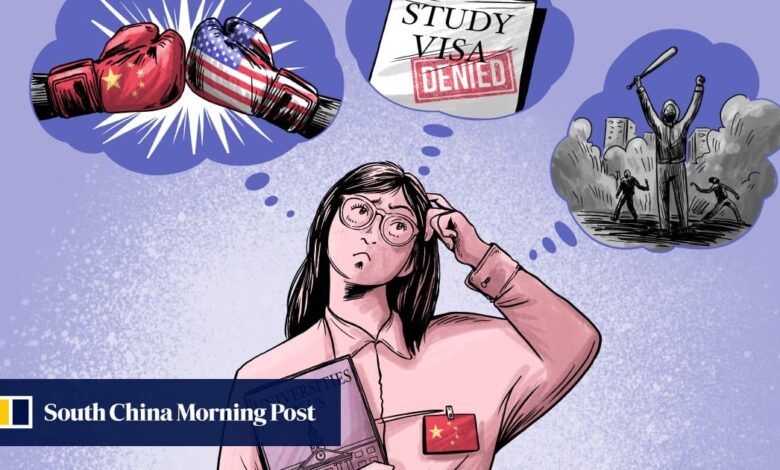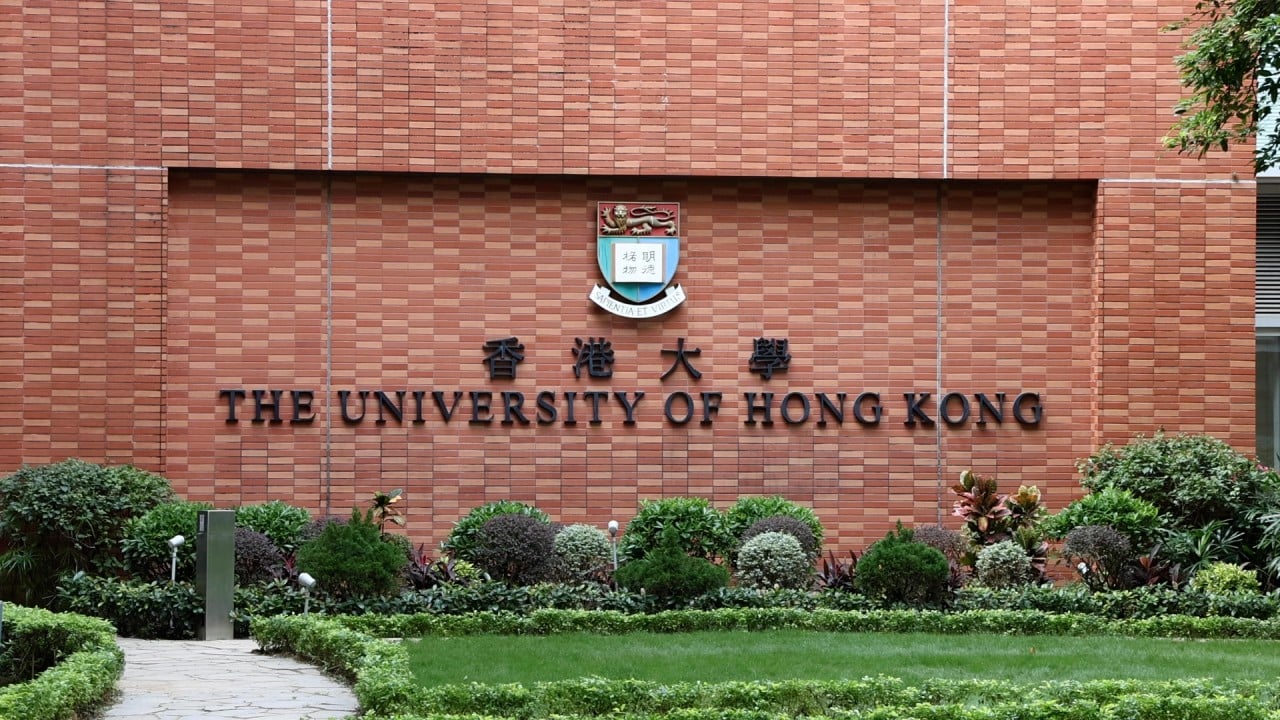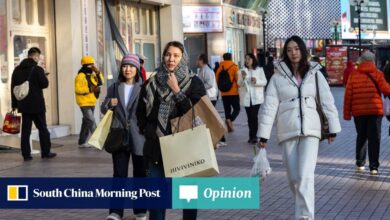As Chinese students forgo US university degrees, the impact on brainpower transcends borders

In 2022, the native of Xian, Shaanxi province, settled on Chalmers University of Technology in Sweden.
Wang’s case illustrates how some Chinese students in recent years have been shying away from degree programmes in the US – traditionally a top destination in their desire to study abroad. Some fear getting caught in the intensified geopolitical crossfire between the two countries, others worry about being denied a visa, and some say they are deterred by the possibility of violence.
According to the 2023 Open Doors report by the New York-based non-profit Institute of International Education, Chinese students in the United States numbered 289,526 during the 2022-23 academic year. That marked a year-on-year decline of 0.2 per cent and a 22 per cent drop from the peak of 372,532 Chinese students in the United States during the 2019-20 academic year.
The report also noted how some US schools had lost 89 per cent of their Chinese enrolment since 2017.
Nonetheless, despite the decline, US State Department figures for last year showed that students from China still comprised the largest group of international students in the US, according to the federally funded Voice of America broadcaster.
Deborah Seligsohn, an assistant political science professor at Villanova University in the US state of Pennsylvania, pointed to a rise in anti-Asian sentiment in the US during the pandemic, and she noted how some Chinese students have expressed concerns about the possibility of being interrogated upon entering the US, or accused of being a foreign agent for Beijing.
In January, China accused US authorities of harassing inbound Chinese students and said “tens” of Chinese nationals were being denied entry every month. China-US ties have soured since 2018 over trade, tech transfers and a host of geopolitical differences.
“That’s why parents worry about the state of US-China relations, because that is what’s affecting the behaviour of people at the border,” Seligsohn said.
Compounding concerns, US deputy secretary of state Kurt Campbell said in June that his country needed to recruit more international students in science, technology, engineering and mathematics, just not from China.
The US issued visas to 115,000 Chinese students in the six months from October after approving nearly 300,000 over the previous full fiscal year.
Li Huiyan, 22, a 2023 University of California, Berkeley, summer-session student from Hubei province, found that “living in the US can feel unsafe”, while the cost of living in the US exceeds that in many other countries.
Higher education in the US costs each student an average of US$38,270 per year – including tuition, books and living expenses – the Education Data Initiative research organisation estimated in May. And the Organisation for Economic Cooperation and Development (OECD) says a US bachelor’s degree costs an average of US$8,200 more than in most of the OECD’s 38 member countries.
Undergraduates at public universities in China pay about US$2,000 to US$10,000 per year, according to estimates by the online student resource platform Keystone Education Group.
Now finishing her undergraduate studies at a university in Wuhan, Li weighed safety and costs against US academic “diversity”, fast degree completion times and programmes that are “practical and job-oriented” compared with China.
Other Chinese nationals have also lauded US campuses for their “diversity”, said Albert Ma, who graduated last year with a political economy degree from UC Berkeley. They could be heard discussing “how great it is to interact with people from all different backgrounds”, he recalled.
She, too, went to Sweden.
“When I was about to apply, there was turmoil in Chicago – security was really bad at that time,” said Su, 26.
We know that Chinese students, especially PhD students, are increasingly feeling unwelcome in the United States
But the US still has not lost all of its glow. San Francisco State University film master’s student Lin Xinjiang pushed safety concerns aside 2.5 years ago to begin his studies because he equated the US with the top talent in cinema.
Late last month, he sat down in the campus library lounge to read an academic paper and said other people of Asian descent in the lounge were from South Korea or had been born in the US.
“America has the best film industry in the world, so that’s basically why I came to study here,” the 27-year-old said. His parents in Henan province cautioned him against going out at night, and he calls downtown San Francisco a “ghost town”. But the often foggy, tree-shrouded campus, he said, is “fine” in terms of safety.
Lin said he planned to spend a year looking for work in the US after getting his degree.
The decline in Chinese students will hurt US science and research by taking Chinese citizens out of the mix, said Rory Truex, an assistant professor with Princeton University’s Department of Politics.
“We know that Chinese students, especially PhD students, are increasingly feeling unwelcome in the United States,” Truex said. “This population is incredibly talented and important to the American scientific and research enterprise, but unfortunately they have been branded as potential threats.
“In my view, the current strategic competition between the United States and China is about human capital more than anything.”
The value of a foreign degree has lost value. They can do better with a university degree from China
China’s universities have improved over the past three to four years on higher average scores in teaching and research, the British Council’s cultural and educational agency said in an October study. Thirteen universities in the 2024 Times Higher Education World University Rankings were in China, up from seven in 2020.
“The value of a foreign degree has lost value,” Seligsohn said. “They can do better with a university degree from China.”
The return rate of Chinese students from abroad had already grown from 14 per cent in 2002 to more than 80 per cent by 2019, according to a York University study. And the state-run publication China Daily placed the 2021 return rate at 69 per cent.
Trouble finding jobs and retaining US visas has motivated many to return to China, according to the Washington-based Centre for Strategic & International Studies.
Faculty and staff members at San Francisco State University have noticed that Chinese-student enrolment has dropped since pre-pandemic 2019. A spokesman for the college confirmed that the figure had fallen from 446 students from China in the autumn of 2019 to only 112 last autumn.
The dance programme, for example, gets two or three per year – a consistent average over the years – but international enrolment is also down overall. The university’s Lam Family College of Business, which graduated 1,068 people last year, has seen a more obvious drop, said Jeff O’Toole, a student-engagement analyst for the college.
San Francisco’s reputation for safety and homelessness has put off Chinese parents, O’Toole said, and “of course there’s politics involved”. He found campus interactions to be richer when more Chinese were enrolled.
“I remember around 2015 or 2016 we had so many, and it’s kind of gone down,” he said. “I had tonnes of Chinese friends, and now I still have a couple, but it’s kind of tapering off.”
Source link





